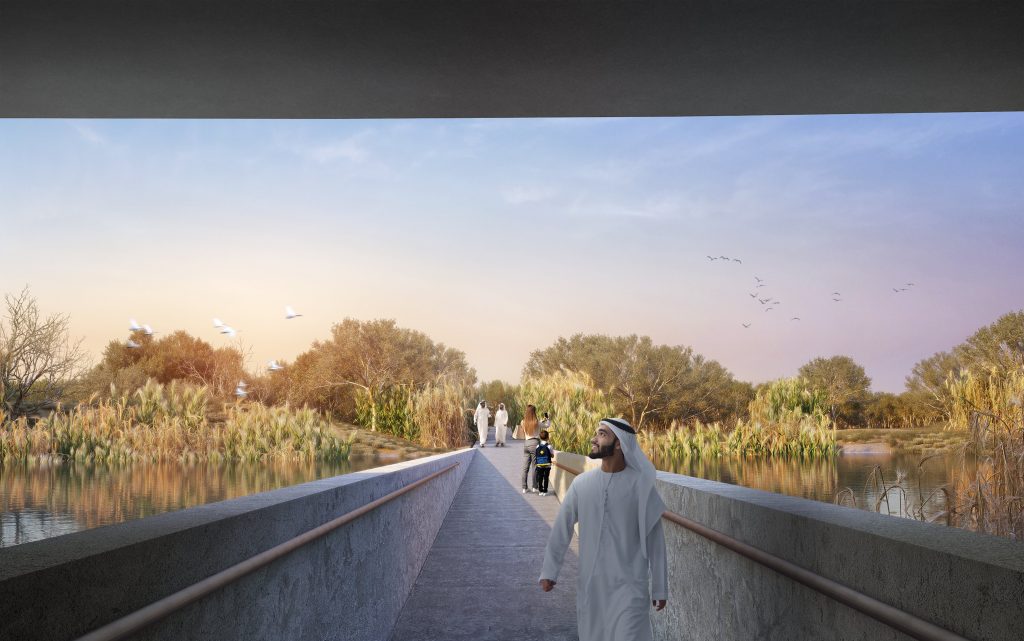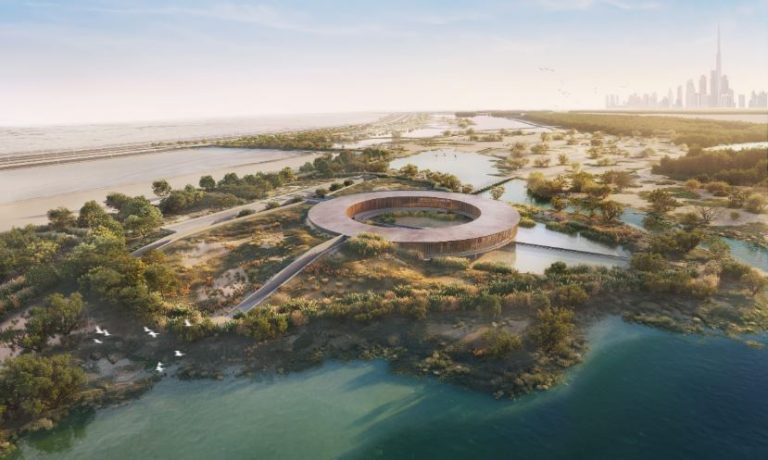Dubai’s not just about futuristic skylines anymore—now, it’s turning its attention to the wild. Ras Al Khor Wildlife Sanctuary, home to flamingos and lush wetlands, is getting a major Dhs650 million revamp. The goal? Turn it into a world-class sustainable eco-tourism destination—without losing the raw beauty that makes it so special.
Phase One: Restoring Ras Al Khor’s Ecosystem From the Ground Up
The first phase, already in motion with a Dhs100 million contract, focuses entirely on restoring and expanding the ecosystem. It’s all about creating more space for biodiversity and preserving the Wildlife Sanctuary’s natural charm.
Expanding Mangroves by 60% to Boost Biodiversity
- Mangrove coverage will increase by 60%, from 40 to 65 hectares.
- Thousands of new mangroves will be planted.
- New irrigation channels will be introduced for long-term sustainability.
Creating New Lakes, Mudflats, and Reed Ponds for Wildlife
- A brand-new Mangrove Lake
- North Edge Lake and reed ponds to attract local wildlife
- New mudflats to encourage bird nesting and feeding
Building a Green Spine to Connect Habitats
- A connected “green spine” will act as a biodiversity corridor, linking all habitats.
- Continuous monitoring and ecological rehab will be part of the plan.
All of this will cover 6.4 square kilometers and is set to be completed by the end of 2026.

Phase Two: Turning Ras Al Khor into a Sustainable Visitor Destination
The second phase of the Ras Al Khor Wildlife Sanctuary adds facilities for eco-tourism and education, spread across 20,000 square meters.
Wildlife-Inspired Spaces: From Viewing Towers to Eco-Conscious Dining
- A modern visitor center showcasing the sanctuary’s wildlife
- Birdwatching towers with unobstructed views of the flamingos
- Eco-conscious restaurants, kiosks, and retail spots tucked into the landscape
Trails, Learning Centers, and Landscapes Designed for Deeper Nature Connection
- Environmental awareness centers to learn about flora, fauna, and conservation
- 5.6 km of cycling tracks winding through the sanctuary
- 3 km of walking trails for up-close nature experiences
- 23 hectares of landscaped areas to blend the built with the natural
Everything in Ras Al Khor is designed to bring people closer to nature without disrupting the wildlife.

Ras Al Khor Is Dubai’s Biodiversity Hotspot
Ras Al Khor isn’t just another green space. It’s one of Dubai’s most important natural reserves. It’s home to over 450 species of flora and fauna, and houses 20,000 migratory birds like the iconic flamingo. In a city where greenery isn’t exactly common, Ras Al Khor stands out as a vital pocket of biodiversity.

A Sustainable Future for Dubai
Once complete, Ras Al Khor is expected to welcome up to 300,000 visitors annually—six times more than it currently sees. But the vision goes beyond numbers. This is about creating a future where urban life and nature can thrive side by side.

A City Sanctuary That Lets Nature and People Coexist
Ras Al Khor’s transformation is a quiet revolution in a loud city. It proves that even in the heart of a buzzing metropolis, there’s space for nature to grow—and for people to connect with it. If flamingos, cycling trails, and mangrove forests sound like your kind of weekend, Dubai’s next big thing isn’t a tower. It’s a sanctuary.
WE ALSO SAID: Don’t Miss…From Exploring Mars to Building Smart Cities: The UAE’s Most Ambitious Futuristic Projects



